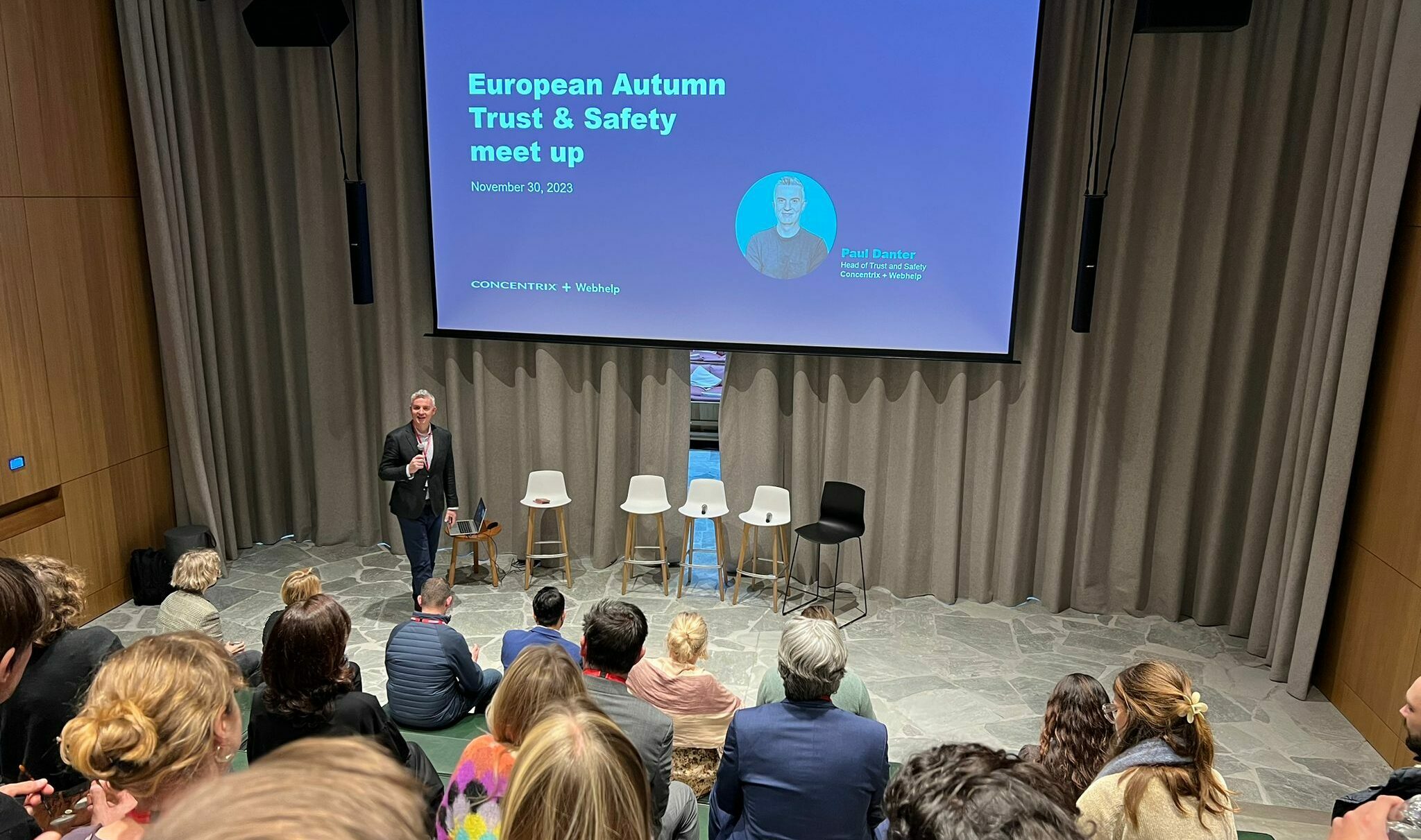Our CIO Vincent Tachet recently took part in a round-table discussion about the role of self-service CX. In this blog, Mélanie Hentges, Managing Director in France for Gobeyond Partners, part of the Webhelp Group, follows up with a look at what best practice for self-service CX looks like now, as well as what’s on the horizon, with a particular focus on what bots and AI can offer.
Why is self-service CX so important?
When it’s done right, self-service customer experience (CX) can give customers exactly what they need, when they need it, whether it’s reassurance, knowledge or guidance. Problems can be resolved quickly and simply, enhancing customer satisfaction and driving down waiting times. Deployed strategically, self-service CX tools can handle lower-value, higher-volume issues while teams of human CX advisors focus on handling higher-value customer queries.
The rise of applied AI
What’s changed in the last few years is the huge technological progress that’s been made on data using Artificial Intelligence (AI). If your self-service algorithm is set up to interrogate your customer data and understand what your customer is asking you, then it’s going to be much easier to get the information that your customers are looking for.
Innovations like Natural Language Processing (NLP) have really changed the landscape of self-service, and it’s already proving to be a game changer both for written and voice enquiries. Before, asking a question of a bot (whether said aloud or perhaps written in the search bar of an FAQ page), was no guarantee that the answer would bear any relation to what had been asked.
Now we’re seeing traditional chatbots (with their limitations and frustrations for customers) begin to be superseded by much more sophisticated virtual advisors which are capable – in some cases – of detecting sentiment and intent. Not only can these AIs understand what’s being asked, but can determine the mood and state of mind of the customer upfront based on tone of voice and speech patterns, making it easier to resolve the call more quickly.
Self-service can be part of a hybrid process
There is also a growing acceptance that self-service needs to be part of a hybrid process, rather than a one-way street for customers. At its best, a customer can find what they need quickly and easily themselves, but companies are more alive now to the possibility that customers might need to be – or simply want to option available – to be looped back in to speak to a human advisor (equally of course they might want or prefer to talk to someone right from the start).
As the metaverse continues to evolve and mature, there is much that will change. We’ve already looked at what that future might have in store for both brands and their customers, but in a world of infinite possibilities in which you can be anywhere doing anything (which is – let’s face it – an integral part of the promise of the metaverse), what does that mean for your CX offering?
This means that the best processes we see now are hybrid, mixing well-developed technology with human interaction. This is useful for customers because it means that those who are still uncomfortable – or unfamiliar – with technology, e.g. older customers who might struggle with digital CX solutions, can also be accommodated.
That kind of flexibility – being able to switch between human and automation – also helps to address the changing moods of our customers. Some days customers might not want to talk to someone, on others they might. Now they can have the choice.
What does next look like?
If that’s what ‘best’ looks like, how about ‘next’? There are four areas I’d like to focus on here.
AI-to-AI
It’s 2028 and you’re planning your next holiday. You ask Alexa to bring back some flight options based on a few budget and location parameters. In the old days, you’d have rung up an airline or a travel agent.
In the near-future travelers may well do it all from their kitchen table. People will ask their domestic virtual assistants to book a flight for them. Or a restaurant table. Or cinema tickets. In turn, those AIs will communicate with the AIs of those brands. Customers will let them take care of trying to find a date or the best table, choosing to outsource their time-consuming ‘life admin’ to the machines, who can do it faster and – the important part if any of this is to come true – better, saving them time and money in the process.
Richer self-service content delivery
Today if you ask a question of a bot or a dynamic FAQ, the answer is usually a text or voice response. But tomorrow it could be a video. Let’s imagine you’ve just brought back a new self-assembly wardrobe from a brand like IKEA. You could ask Siri or Alexa to show you how to build it, and perhaps the answer will be an assembly video or audio walkthrough, via your virtual assistant’s screen or speaker.
Machine learning applied to language
How we communicate with AI-powered self-service will change radically in the future, as machine learning radically improves how we communicate with them. If you’ve ever caught yourself speaking to an automated response on a customer helpline, or a virtual assistant in your own home, then you’ll know what I mean.
Is that clipped, simplistic, slightly forced over-enunciation necessary to make yourself understood? As though you’re talking to an elderly relative? In the future, the vast advances made by machine learning will mean that everyone and anyone can be understood, whatever language, idioms and slang they use.
The implications of this will be huge. In my role at Webhelp, I was talking to a fintech client recently, about how this increase in the sophistication of voice technology already helps them support customers who don’t speak a language well enough to be able to read and write – whether they are immigrants new to a country, or natives who struggle with literacy. Voice could unlock CX for these people.
Making your bot… a brand
Bots work best when they reflect the personality of their brand, with a name, feel and tone of voice that feels unique to it. I spent years working in marketing, and any marketer will tell you that if you have a strong brand it makes all your communications work harder. For example, La Banque Postale in France has designed a chatbot with a female personality, complete with a name. If you’ve got a strong brand, it makes everything work harder.
What does your self-service strategy look like? Let me know below.


![[Fashion] Choosing the right partners to grow your business in 2024, at a time when trust is fragile](https://media.webhelp.com/wp-content/uploads/2023/12/21090253/Office-Showcase-2.png)


